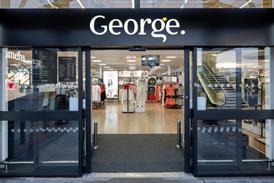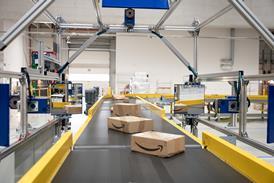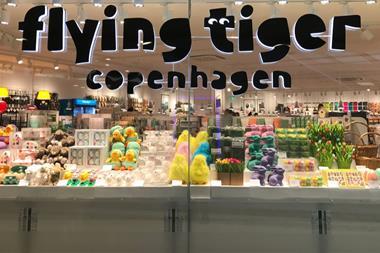To see just how worldly the UK’s retail landscape has become, we asked Retail Week sister brand Retail Navigator to reveal the international retailers with the biggest UK sales, and how much they’re forecast to grow over the next few years.
The last few years haven’t been especially laden with hometown glory for British retailers. Legendary brands Ted Baker, the Body Shop and Wilko have all hit the rocks and filed for administration, while the waters have become even choppier for two brands that were once at the top of the UK’s fashion food chain – Asos and Superdry.
Although there are many factors to consider when assessing the downfall of some of this country’s most famous retailers, British shoppers’ embrace of huge global brands certainly comes high on the list.
Shoppers could go for months without spending a single penny with a British retailer and probably not even notice it, because from grocery to sportswear, international retailers have certainly made a home for themselves in the UK.
Topping the list is, of course, ecommerce giant Amazon, which is currently the fourth biggest retailer in the UK overall. In grocery, Aldi reigns supreme, while TK Maxx is the biggest in fashion; Nike leads sportswear and Ikea tops home and furniture.
Although the UK has a taste for all things international, the number of countries represented in the top 20 is rather selective – with just seven countries breaking into the ranking. Most popular are North American retailers – nine of the biggest 20 brands hail from the US and Canada, four are German, Spain and Sweden have two brands apiece and Denmark, France and China all have one retail representative.
Japan may have made the list with fashion brand Uniqlo, but owner Fast Retailing doesn’t break out its UK sales so could not feature in this ranking.
American dreams
The top half of the list presents no surprises, but there are some less obvious retailers when we look at the final few spots.
All-American fashion brand Abercrombie & Fitch may not have been front of mind since its fall from grace a a few years ago, but it’s been making strides to become cool once more.
“Abercrombie & Fitch chief executive Fran Hororitz has been leading a turnaround since 2017,” says Retail Navigator senior retail analyst Beth Bloomfield. “It has retrenched somewhat. UK store numbers have fallen from 36 to 22 in 2021/22, but it’s expanding in the market once more.
“It opened the doors of a new store in Carnaby St, London in December 2023, which followed the launch of its store in Battersea Power Station in October the same year. It has also announced plans to open another London store in early 2025.”
Another North American retailer that has made strides on our shores is sports and leisurewear label Lululemon, which pulled in nearly £90m in UK sales in FY22/23.
According to Bloomfield, like Abercrombie, Lululemon’s sales have been assisted by the expansion of its store footprint.
“Canadian Lululemon is quietly growing in the UK market. It opened two new standalone stores in Brighton and Battersea Power Station in 2023, as well as a shop-in-shop in Fenwick Newcastle. It also has plans to relocate and upsize its Covent Garden store this summer.”
One of the American retailers that has been here the longest is TK Maxx, which opened in the UK in 1994.
Known as TJ Maxx across the pond, the retailer has found success here recently with shoppers seeking better value during the cost-of-living crisis, as well as with younger shoppers who are prepared to rummage for hidden gems.
And, according to Retail Navigator senior retail analyst Kate Doherty, there’s even more potential to grow if it can make more of its online offer.
”Off-price retailer TK Maxx has an enviably agile business model,” she says.
“The big brands and designer labels that it sources for lower prices, through its opportunistic-buying business model, will continue to prove popular with value-seeking shoppers. As inflation eases, TK Maxx’s affordable big-brand products could win back consumers who had sought out rock-bottom prices through fast-fashion retailers as they looked to cut spend.
”It does have some work to do to build awareness of its ecommerce presence, but is tapping into its significant growth potential in broadening its product offer and extending its physical reach.”
When we switch the table to look at how much the UK is worth as a percentage of sales to global retailers, it really puts our place in the world into perspective.
Although Amazon is the biggest international retailer here, and we are one of its largest markets, the UK represents a mere 6% of the ecommerce giant’s sales.
“Two thirds of revenue for this online giant comes from its domestic US market,” says Retail Week data and insights director Lisa Byfield-Green.
“The UK is Amazon’s second largest international market, behind Germany and ahead of Japan, and it’s also a test market for grocery as it’s the only country outside of the US to have Amazon Fresh stores. This is largely owing to the UK’s strong and early adoption of online and specifically online grocery shopping.”
A retailer which has very much put its eggs in the UK’s basket is Aldi, the second-largest international retailer here.
“The UK is just one of 19 markets where German discount giant Aldi (Nord and Sud) operates, but it’s a key growth market alongside the US,” says Byfield-Green.
“In recent years, Aldi in the UK has grown rapidly, fuelled by expansion and strong like-for-like sales. Sales in the UK and Ireland increased 13.4% to £15.47bn for the financial year to 31 December 2022 (FY2022) and it ended the year with more than 1,000 stores.
“It overtook Morrisons to become the UK’s fourth largest supermarket in September 2022 and has benefited from price-conscious consumer habits throughout the cost-of-living crisis. Continued growth is anticipated for this popular discounter, although at a more moderate pace as food inflation and cost-of-living pressures begin to ease.”
Small but mighty market
Although there are no new countries in this version of the ranking, two new retailers do appear.
eBay has the biggest stake in the UK when it comes to sales as a percentage, with just over 16% of its turnover coming from consumers in this country. The other new retailer is Flying Tiger Copenhagen, for which the UK is its third biggest market behind Italy and Spain.
It just so happens that these two retailers, like our hometown heroes, also face stiff competition from new retailers hailing from far-flung corners of the globe.
eBay is facing heat from Lithuania’s Vinted, which Retail Week recently revealed as one of the fastest-growing retailers in the UK. In a bid to get an edge on the newcomer, eBay has scrapped selling fees on clothes for individual sellers.
While Flying Tiger will have one eye on fellow Danish brand Søstrene Grene, which has been on an aggressive expansion path in the UK, and another on Chinese retailer Miniso which is doing the same.
Another Chinese superpower that’s presenting Amazon with a clear threat is challenger brand Temu, which is rapidly growing here, thanks to its ultra-low prices which, it says, encourages customers to “shop like a billionaire”.
So, if embattled British retailers can take solace in anything, it’s that they’re not the only ones feeling the pressure from outsiders.
Methodology
This ranking covers sales generated by international retailers that have entered the UK market under their trading names and excludes British retail brands that have come under foreign ownership.
Sales denoted with an ᵉ are Retail Navigator estimates.
H&M, Inditex and Urban Outfitters’ figures are combined turnover of all their fascias.
The analysis was based on data compiled by Retail Navigator, a trusted business development tool powered by Lumina Intelligence, offering curated insights and expert analysis on the UK’s leading retailers.


























No comments yet